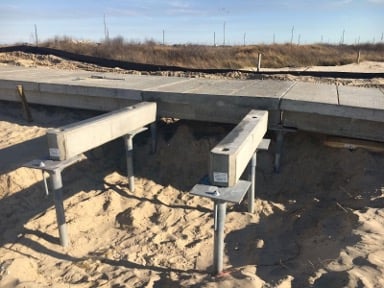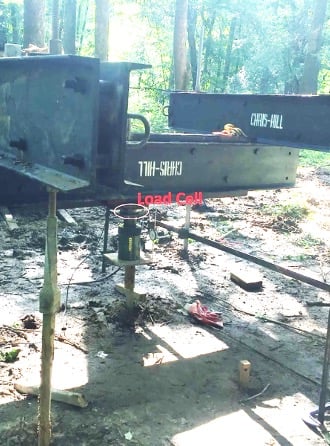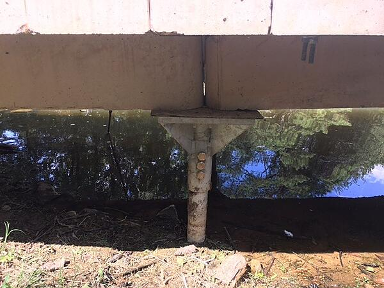Picture this. You are the head contractor for a major greenway renovation, and you are finalizing all of the layouts and designs for the various parts of your project.
You are especially excited about the installation of the new concrete boardwalk as you know it will provide greenway pedestrians and cyclists a wonderful experience for many decades without requiring any maintenance.
You have the design plans for the boardwalk, but you realize that the landscape architect or engineer has not defined the foundation. You do not want to let this slow you down, so you ask your foundation subconsultant to come up with a design solution based on the geotechnical report.
Based on the geotechnical report, you and your colleagues get a new foundation design approved for the project: helical piles. You push forward.
All seems good, but when you request updated design drawings, you run into a major roadblock.
The new helical pile foundation is going to result in costly boardwalk design changes and halts your entire project.
What happened?
 Helical piles were used for Galveston Island State Park’s PermaTrak boardwalks installed in 2021. The Galveston Island sand dunes sit in the background.
Helical piles were used for Galveston Island State Park’s PermaTrak boardwalks installed in 2021. The Galveston Island sand dunes sit in the background.
Helical Piles or Piers as a Foundation for your Concrete Boardwalk Project
Helical piles, sometimes referred to as “screw piles” or helical piers, can serve as a great foundation for your PermaTrak concrete boardwalk project.
They actually complement the durable, maintenance-free nature of the concrete boardwalk very well as they are composed of extremely durable materials in their own right.
Made up of one or more helix plates attached to a central steel shaft, helical piles require smaller installation equipment and are generally friendly to the environment.
The helical piles’ strength is achieved through soil bearing at each helix, which is attached to the lead section of helical pier. The lead section of a helical pier is typically a steel tube or square bar. They are installed quickly with light construction equipment, and oftentimes they are a cost-effective solution for both PermaTrak and timber boardwalks.
To learn more about the PermaTrak concrete boardwalk being installed on helical piles, check out our step-by-step process here with images.
Helical piles can work well, but contractors, designers, and landscape architects should consider these 3 crucial points before moving forward with layouts and design drawings for this foundation option.
Note: PermaTrak’s team of engineers can provide the helical pier foundation specifications and design drawings for your project outlined below.

1. Helical piles or piers are a specially designed item that should be delegated to a helical pile engineer.
At PermaTrak, we frequently see this step missed, and it gets right to the heart of the contractors’ plight in the introduction of this article.
Helical pile design should be delegated to a helical pile engineer who specializes in this type of item. When the design is not completed by a specialist or when the foundation is left unspecified completely, drawings and plans can end up needing to be changed or fully redone before installation begins.
The delegated engineer performing the design can help specifically call out design requirements for the helical pier system.
For example, the design needs to account for both axial and lateral load. The axial load is the vertical load on the pier (gravity or uplift), and the lateral load refers to the horizontal forces (wind, etc) acting on the boardwalk structure.
Depending on the applied loads and unbraced height, the helical pile specialist can determine whether or not cross bracing or battered piles are necessary. While battered piles, or piles driven at an angle, can help the helical piles offset lateral loads in some situations, cross bracing is a better fit for other situations.
Once the design requirements have been delivered, signed, and sealed by the helical pile design specialist, calculations for other parts of the design and layout should support the recommendations. While this seems like a given, it is not always the case. There are times when the other parts of the design do not align with what the helical pile engineer has suggested.
Example of PermaTrak boardwalks installed on helical pier foundations using top-down construction methods.
2. Helical pile or pier foundation specifications must include testing criteria to define the loads of the piles.
Just as important as having a specialist specifically call out design requirements for the project, the helical pile specifications should include pile testing criteria.
Piles should be tested during the early construction stages of any project, and helical piles need to have specific testing completed based on their unique nature and a case by case review of each boardwalk construction site.
For reference, the “criteria” refers to the test results measuring the load capacity of the piles. Engineers can perform a number of different tests in determining this criteria.
Usually two piles are selected early in the installation process to receive a more rigorous load test. This is called a static load test and involves testing the piles with a hydraulic jack, beams, and temporary anchors.
These load tests allow the team to develop a relationship between torque and actual load capacity for a specific site. Once this relationship is established, all other production piles can generally be installed by monitoring torque and without the expense of testing set ups at each pile location.
 Seen here is a helical pile undergoing a capacity bearing test for a future PermaTrak boardwalk installation. Reach out to PermaTrak if you need the helical pile specification and testing completed.
Seen here is a helical pile undergoing a capacity bearing test for a future PermaTrak boardwalk installation. Reach out to PermaTrak if you need the helical pile specification and testing completed.
As a reminder, as part of the process of working with PermaTrak, our engineering team can provide helical pile foundation specifications.

3. Helical piles are most useful and work well in low or shallow boardwalk conditions, and even top-down construction applications, but not elevated boardwalks.
As mentioned above in the crucial point #2, the helical piles are drilled, not driven, to a specific depth calculated for required boardwalk load capacity. The nature of their installation requires less equipment, “lighter” machines overall, and it results in a smaller disturbance area than some other foundation options. In addition, the helical pile configuration can be easily modified in the field if needed in contrast to other deep foundation types.
For all of these reasons, helical piles are a great deep foundational option for a sensitive wetland or any ecosystem needing top down construction and low environmental stress.
Top down construction refers to the ability to install boardwalk treads and beams from equipment operating on top of previously installed treads and beams. We often see helical piles installed on project sites with restricted access, a high water table, limited vertical head room, or weak surface soils.
Helical piles or piers are generally not a good fit for elevated boardwalks. Their efficiency can be best realized in shallow, low boardwalk conditions.

Determining if Helical Piles or Piers are the Right Foundation for Your Project
Engineers and landscape architects have a plethora of different material options to choose from in designing a foundation system for a durable, no-maintenance concrete boardwalk.
The question is: what is the best option for your next boardwalk?
If you think it could be helical piles, let us walk you through a complimentary consultation to start the planning process. We’ll walk you through the key points in the steps above and make sure that you avoid costly mistakes and design changes!




